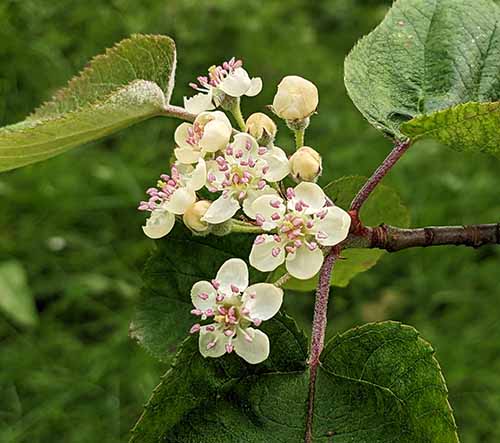#109 VEITCH'S YUNNAN CRABAPPLE
Malus yunnanensis subsp. Veitcheii (‘Wilsonii’)

This tree is on the south side of the Malus Avenue.
British Champion
| Distribution: | Rare in the wild, native to west and central China, and Myanmar. Found in mixed forests on slopes or by streams. |
| Planting Date: | 1926 supplied by Hillier Nurseries, Romsey, Hampshire |
| Growth Habit: | Tall with wide crown and erect branches. |
| Bark: | Dark grey-brown, peeling in flakes to expose younger orange brown bark. Patches of smooth grey with lenticels. |
| Leaf: | Broadly ovate, pointed at the tip and heart shaped at the base. Slightly toothed and marginally lobed. Matt green upper and paler below. |
| Flowers: | 8 to12 flowered corymbs of about 5 cm to 9 cm across. Small (1.2 cm) flowers, creamy white, with five petals, in clusters on short stout stems and triangular persistent sepals. |
| Fruit: | Small, hard and round in clusters, slowly turning from green to rosy red and yellow. |
| Toxicity: | Flesh is astringent and gritty with stone cells. |
| Tree size in April 2023 | Height 14 m and girth 154 cm (at 0.1 m) |
| Uses: | Ability to grow in challenging conditions gives it value as a rootstock for other apples in its native range. |
| Plant Hunter: | Ernest Wilson on behalf of Veitch Nurseries, Exeter |
| Introduction Date: | 1901 |
| Anecdotes and Comments | In 2023, rated ‘British Champion’ by The Tree Register on account of its height and rated English Champion; height and girth. |